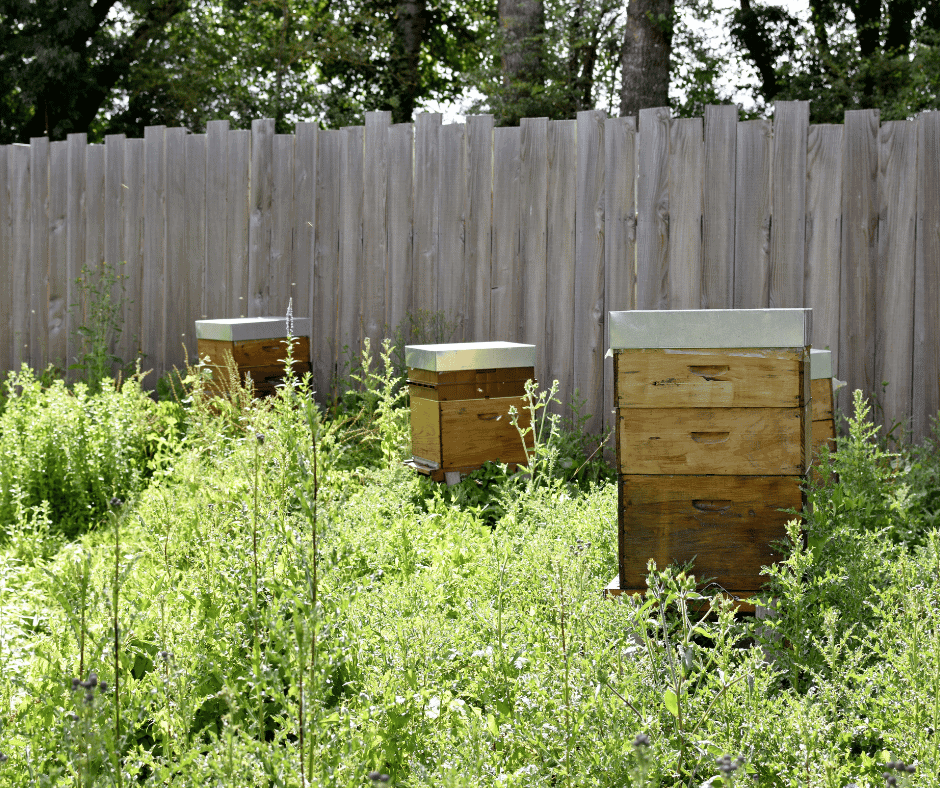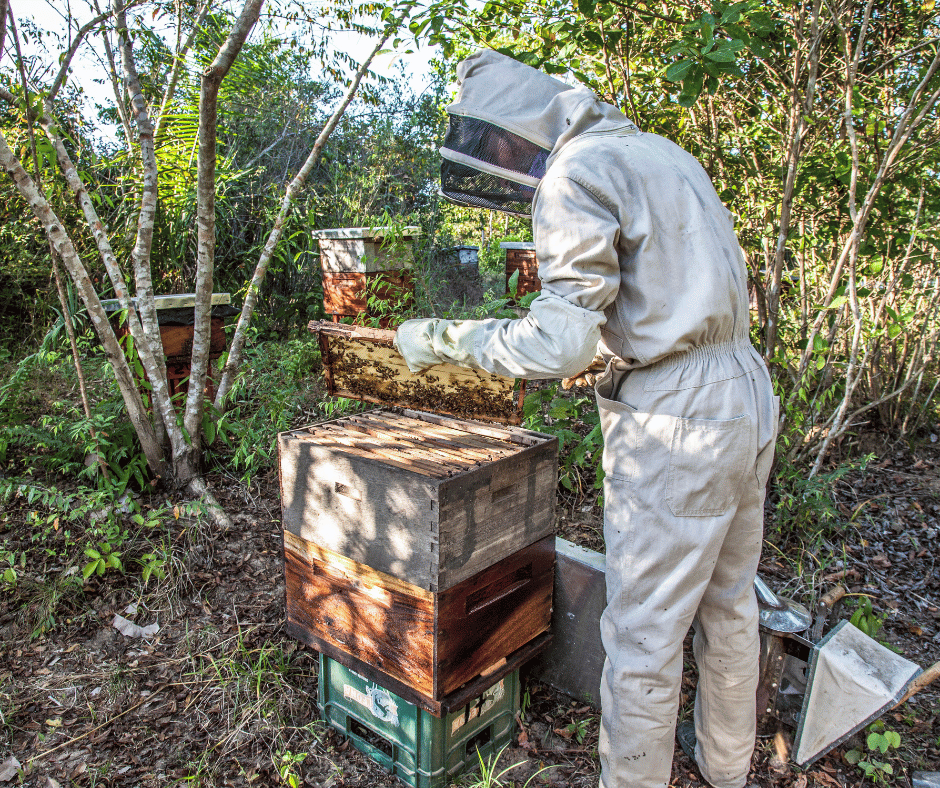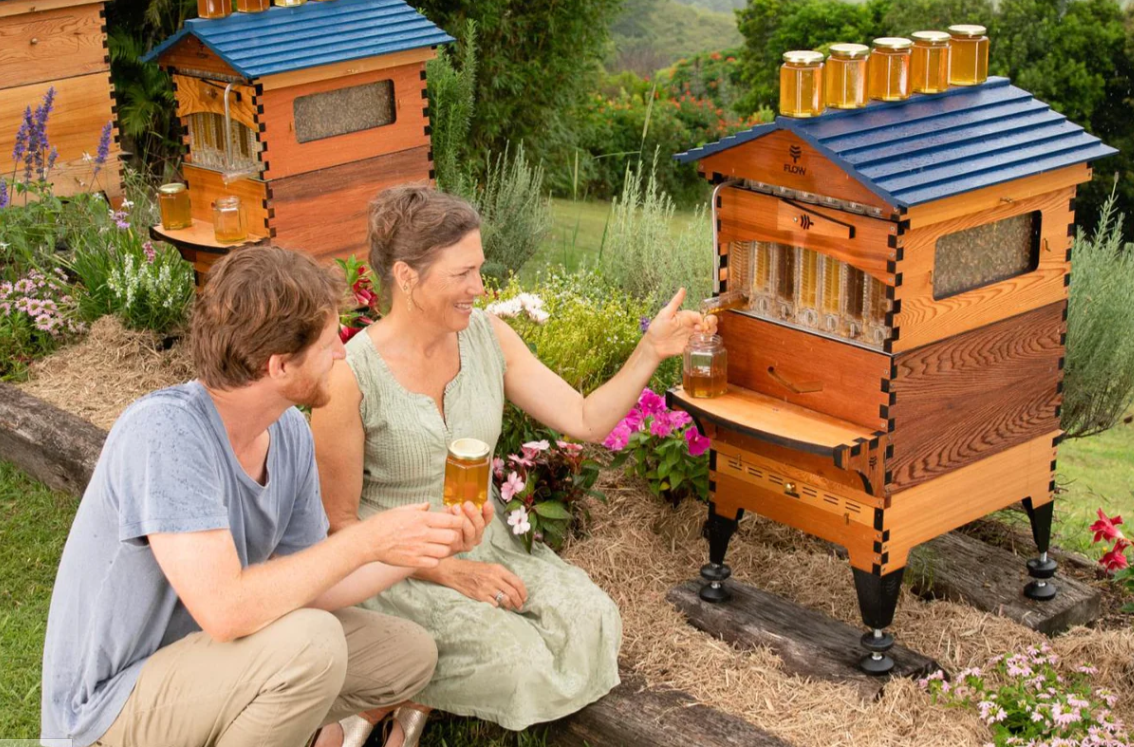
Are you considering moving your bees? Perhaps you need to transport them to a new location for better foraging opportunities, or maybe you’re relocating your hive due to a change in property ownership.
Whatever the reason, it’s important to understand the proper methods for transporting bees to ensure their safety and health during the move.
In this article, you’ll learn about the preparation and provisions necessary for transporting bees, as well as the restrictions and considerations for short and long-distance moves.
You’ll also discover the various types of transportation vehicles used for moving bees and the potential stress that can be caused by the process.
By understanding the pros and cons of moving bees, you’ll be better equipped to make informed decisions about transporting your hive.
Table of Contents
Reasons for Moving
There are a few reasons why beekeepers may need to transport their bees. One is to take advantage of different nectar flows in different areas. For example, if one area is experiencing a dearth of nectar, beekeepers may need to move their hives to an area with a better nectar flow. Another reason is to provide pollination services to farmers. Beekeepers may rent out their hives to farmers who need bees to pollinate their crops.
When deciding whether to move their bees, beekeepers need to conduct a cost analysis to determine if it’s economically feasible. The cost of transporting honey bees can be significant, especially if the distance is far.
Beekeepers need to factor in the cost of fuel, labor, and equipment when they move a hive. They also need to consider the potential loss of honey production if the move isn’t successful.
Keep An Eye On The Weather
Weather conditions and regulatory requirements are also important factors to consider when moving bees. Bees can be stressed by extreme temperatures or rough handling during transport. Beekeepers need to ensure they have the proper permits and follow all regulations when moving bees across state or international borders. They may also need to quarantine their bees to prevent the spread of diseases.
How Healthy Are Your Bees?
Beekeepers need to take into account hive health and timing considerations when moving their bees. If the bees aren’t healthy, the move could exacerbate any existing problems. Beekeepers also need to time their moves carefully to avoid disrupting the bees’ natural cycles. For example, moving hives during the peak honey production season could result in a significant loss of honey.
Overall, moving bees requires careful planning and consideration of multiple factors.
Preparation and Provision
You’ll need to make sure you have enough food and water for your bees during the journey. Bees can quickly become dehydrated and starved during transportation, so it’s important to provide them with ample nourishment. Before you hit the road, make sure the bees have access to a water source and stock up on food. A good rule of thumb is to bring enough food for a week, just in case.
In addition to food and water, you’ll need to consider other preparation and provision measures for your bee transport. Hive ventilation is crucial to keep your bees cool and comfortable during the journey.
Safety precautions are also a must. Be sure to secure your hives and check them frequently during the journey. Queen introduction is another important factor to consider; if you’re moving bees to a new location, you’ll need to ensure the queen is properly introduced to the new hive.
Finally, keep weather considerations in mind. Extreme temperatures can be fatal to bees, so plan your trip during mild weather conditions if possible.
Short Distance Restrictions
If you’re planning on moving your hives a short distance, there are still restrictions and precautions you need to keep in mind. Beekeeping regulations vary from state to state, so make sure you check with your local authorities before you transport your bees. Some states require permits or licenses for beekeepers, while others limit the number of hives that can be moved at once.
One important factor to consider when transporting bees a short distance is hive ventilation. Bees need proper ventilation to stay healthy during transport, so make sure your hives have enough ventilation before you move them. You can add ventilation holes or screens to your hive boxes to ensure proper airflow. This will also prevent the buildup of heat and moisture inside the hive during transport.
In addition to ventilation, colony weight, hive security, and beekeeper insurance are important considerations when transporting bees. Ensure that your hives are securely strapped down during transport to prevent them from shifting or falling over.
Check the weight of your colonies before you move them to make sure they are manageable. Lastly, make sure you have beekeeper insurance to protect yourself in case of any accidents or injuries during transport.
By following these precautions, you can ensure that your bees stay safe and healthy during transport.
Long Distance Restrictions
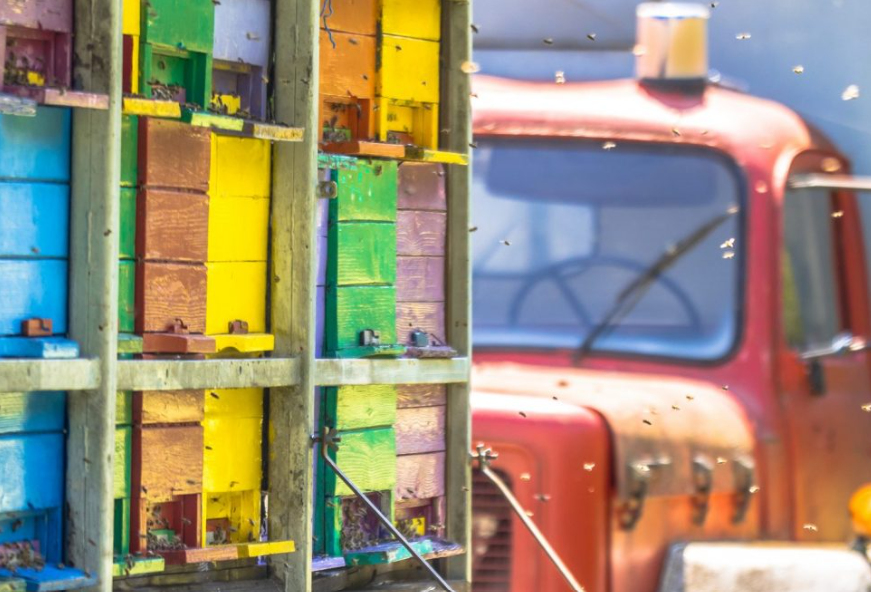
When planning to move hives over a long distance, it’s crucial to research and comply with regulations set by state authorities. These regulations are put in place to ensure that bees are transported safely and do not pose a threat to other colonies.
Before embarking on a long-distance trip with your bees, it’s important to check the quarantine requirements in your destination state. Each state has different rules regarding the importation of bees, and failure to comply with these regulations can result in hefty fines or even the destruction of your hives.
In addition to complying with quarantine requirements, you’ll also need to ensure that your bees are healthy and disease-free.
When transporting bees over long distances, you’ll also need to be aware of flight restrictions and weather conditions. Bees are sensitive to temperature and changes in air pressure, so it’s crucial to avoid extreme weather conditions that could harm your bees during transport.
Additionally, some airlines have restrictions on the transportation of live animals and insects, so it’s important to research your options and choose a carrier that complies with all federal and state regulations. By taking the time to research and comply with regulations, you can ensure that your bees arrive at their destination safely and without incident.
| Regulations | Quarantine Requirements | Health Checks | Flight Restrictions | Weather Conditions |
|---|---|---|---|---|
| State authorities set regulations to ensure safe transportation of bees. | Each state has different quarantine requirements for importing bees. | Many states require health checks and certificates of inspection before allowing bees to be brought in. | Some airlines have restrictions on the transportation of live animals and insects. | Extreme weather conditions can harm bees during transport. |
Transportation Vehicles
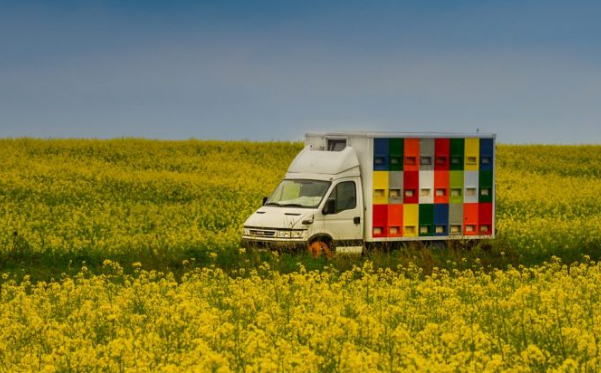
Choosing the right vehicle for safe and efficient transportation when moving beehives is crucial for the success of your beekeeping operation. When it comes to transporting bees, it’s important to select a vehicle that can accommodate your beekeeping equipment and provide ample ventilation for your bees.
It’s also important to consider safety measures and legal requirements to ensure that your trip is both safe and legal. When selecting a vehicle for transporting bees, it’s important to consider the size and weight of your beekeeping equipment. You’ll need a vehicle that can accommodate your beehives, beekeeping tools, and any other necessary equipment.
Additionally, you’ll need to ensure that your vehicle has good ventilation to keep your bees cool and comfortable during transportation. Proper hive ventilation is crucial to prevent heat buildup and ensure that your bees don’t become stressed or agitated during transport.
As we have already said, weather conditions also play a significant role in the transportation of bees. It’s important to consider the temperature and humidity levels during your trip and make any necessary adjustments to your transportation plans. For example, if the temperature is too high, you may need to make more frequent stops to check on your bees and ensure that they’re not overheating.
Additionally, it’s important to consider any legal requirements for transporting bees, such as obtaining necessary permits or licenses. By taking these factors into consideration, you can ensure that your bees arrive at their destination safely and comfortably.
Stress Caused By Transporting The Bees
The stress caused by transportation can have a significant impact on the well-being of your bee colony. It’s important to understand the effects of transportation stress on your bees.
When bees are transported, they can experience physical stress due to the jostling and movement of the transportation vehicle. Additionally, bees can experience psychological stress due to the change in environment and the disruption of their routine.
To manage the stress caused by transportation, it’s important to take several factors into consideration. Providing proper ventilation and temperature control in the transportation vehicle can help reduce physical stress. Additionally, minimizing any sudden movements or stops during transportation can also help reduce stress.
It’s important to monitor the impact of transportation on your bees and to take appropriate measures to mitigate any negative symptoms.
There are several solutions to help reduce the impact of transportation stress on your bees. One solution is to use specialized transportation equipment designed specifically for bee transportation. These vehicles are equipped with features that can help reduce physical stress and maintain proper ventilation and temperature control.
Another solution is to minimize the distance of transportation by limiting the number of colonies transported at one time. This can help reduce the amount of time spent in transit and minimize the impact on the bees.
Make A Plan Before Moving A Bee Hive
Before moving a beehive, it is crucial to create a well-thought-out plan. Moving bees can be a delicate process, and a proper plan helps ensure the safety and success of the relocation. Firstly, choose a suitable destination for the hive, considering factors such as access to forage, sunlight, and protection from harsh elements.
Next, gather the necessary equipment, such as a bee suit, smoker, hive tool, and transportation vehicle. Ensure that all equipment is in good condition and readily available on moving day. Notify neighboring beekeepers or authorities if required by local regulations.
Prepare the hive by sealing the entrance the night before the move to prevent bees from leaving or re-entering. Secure the hive components tightly to avoid shifting during transportation. When transporting the hive, drive carefully, keeping in mind that sudden movements or vibrations can agitate the bees.
By making a comprehensive plan, considering every step of the process, and taking necessary precautions, beekeepers can minimize stress and disruption for the bees, ensuring a smooth and successful relocation of the hive.
Preparing Bees For Transportation
Preparing bees for the move is a crucial step to ensure their safety and well-being during the journey. Firstly, it’s important to seal the hive properly to prevent any escape or entrance of bees during transportation. This can be achieved by using sturdy hive straps or securing the hive components tightly.
Next, ensure that the bees have ample ventilation by creating small openings or using specialized transport screens. Sufficient airflow will help regulate temperature and prevent the buildup of excess moisture within the hive.
Before moving the bees, it’s advisable to feed them adequately. Providing a source of nourishment such as sugar syrup or pollen patties will ensure they have enough energy to sustain them during transport.
Lastly, choose the timing of transportation wisely. Avoid moving bees during extreme weather conditions or during the hottest hours of the day. Cooler temperatures or evenings are preferable as bees are less active and less likely to overheat.
By following these steps and being mindful of the bees’ needs, you can prepare them effectively for transport, promoting a safe and successful journey to their new location.
What Happens To Bees Left Behind When A Hive Is Moved?
When a beehive is moved, there is a risk of bees being left behind. Bees are highly attached to their hive’s location and rely on precise navigational skills. If the hive is relocated without proper precautions, some bees will return to the original site, only to find an empty space. These stranded bees may become disoriented and confused, searching for their hive and their fellow colony members.
However, beekeepers can employ strategies to mitigate this issue. One common method is to block the hive entrance for a brief period before transportation. This prevents bees from leaving or returning to the hive, ensuring that the entire colony is relocated together. Additionally, using techniques such as moving the hive during nighttime when bees are less active can also help minimize the number of bees left behind.
Beekeepers must be cautious and proactive to ensure the well-being and unity of the colony during hive movements. By taking the necessary precautions, they can minimize the chances of bees getting lost or left behind, allowing the hive to settle into its new location smoothly.
Best Time To Move A Beehive
The timing of moving a beehive is crucial to ensure the well-being and success of the colony. Generally, the best time to move a beehive is during the late evening or early morning when most bees are inside the hive. Bees are less active during these hours, making it easier to block the entrance and confine them within the hive.
Moving the beehive during cooler weather is also advantageous. Bees are less likely to be agitated or disoriented when temperatures are lower. Additionally, moving the hive during the spring or fall seasons is preferable, as these periods have more stable weather conditions and abundant nectar sources.
It’s important to note that the hive should be moved a short distance at a time, allowing the bees to reorient themselves gradually. By moving the hive incrementally, the bees can adjust to their new surroundings and avoid confusion.
Pros & Cons Of Moving Bees
Moving bees can have its advantages and disadvantages, so it’s important to weigh the pros and cons before making a decision. Here are three things to consider before transporting your bees:
1. Benefits: Moving bees can provide benefits such as access to new sources of nectar and pollen, which can strengthen the colony and increase honey production. Additionally, transporting bees can allow beekeepers to participate in pollination services, which can be a lucrative business opportunity.
2. Challenges: Transporting bees can be a complex and challenging task. Bees are sensitive to changes in the environment, and sudden movements can trigger stress and aggression in the colony. It’s crucial to keep the bees calm. Furthermore, transportation can expose bees to harmful pesticides and diseases, which can have a devastating impact on the entire hive.
3. Safety and Alternatives: Safety is a paramount concern when transporting bees. It’s important to use proper protective gear and equipment, as well as follow safety guidelines to minimize the risk of accidents. Alternatively, beekeepers can choose to keep their bees in one location and focus on maintaining a healthy and productive hive, rather than risking transportation-related stress and disease exposure.
Moving bees can be a beneficial but challenging task. It’s important to carefully consider the pros and cons, and take necessary safety precautions to ensure the well-being of the colony. Alternatively, beekeepers can choose to keep their bees in one location and focus on maintaining a healthy and productive hive, rather than risking transportation-related stress and disease exposure.
Video On Moving Beehives To A New Location
Final Thoughts
Now that you know the ins and outs of transporting bees, you can confidently move your hives to a new location. Remember to always prepare and provision your bees before moving them, and be mindful of the restrictions for short and long distances.
Choose the appropriate transportation vehicle and be aware of the stress caused by transporting the bees. While moving your bees can have its challenges, it can also have its benefits.
You may need to move your hives for various reasons, such as to find better foraging areas or to avoid unfavorable weather conditions. By carefully planning and executing the move, you can ensure the safety and well-being of your bees and ultimately improve the success of your beekeeping operation.

